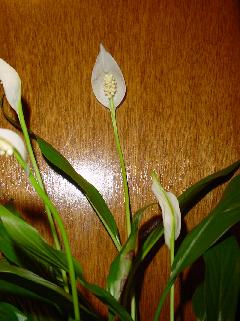 |
Charles Zidar
ANCIENT MAYA BOTANICAL RESEARCH |
|
| Family: | Araceae | | Genus: | Spathiphyllum | | Species: | spp. | | Authority: | Schott | | Common Name: | peace lily | | Maya Name: | platanillo, teic, tsabal, tuic | | Depictions: | Ceramic... | | Maya Plant Use: | Food & medicine.
The leaves of the Alocasia macrorrhiza, another plant in the Araceae family, is used for a wide array of skin conditions as well as varicose veins, rheumatic pain, sinus congestion, and wounds (Arvigo and Balick, 1998).
The root of another family member, Acorus calamus, contains the active principle asarone which interacts with the body giving a similar state to LSD. Homalomena lauterbachii, another plant on the Araceae family, when mixed with other plants produces a violent condition ending in slumber. It is also used as an arrow poison. | | Botanical Significance: | The depictions of the peace lily may mean rebirth such as that of the modern lily. The spathe offers protection and a backdrop to the figures that it envelopes. The spadix being so pronounced could relate to the reproductive nature of the flower, and thus to human sexuality/reproduction. | | Ritual Significance: | An elite Maya citizen or lord is seen emerging from this flower. He is most likely taking the place of the spadix with the spathe as a backdrop. | | Photos: | Click on an image below for high resolution comparison. |
| |



